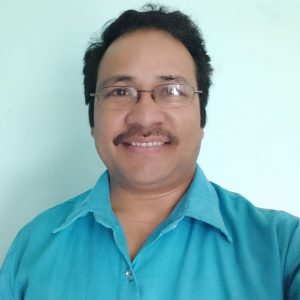Dear Valued Readers,
Namaste!
ELT Choutari is pleased to present the second quarterly issue (April-June) of 2021. This issue has covered a wide range of areas of applied linguistics, classroom pedagogy, ELT practices, and writing tips for teachers. This issue consists of six blog posts having diverse issues from mini research to reflective notes.
Due to the spread of the new variant of COVID-19, our country is back to lockdown. With this teaching-learning is going to suffer again, which will result a ‘learning crisis’ for a majority of students around the country who have limited Internet access and lack of digital facilities. The virtual mode of delivery may not be productive and long-lasting to mitigate the possible learning crisis unless we access digital devices (gadgets and smartphones) and broadband internet access with teachers, students, and their parents. And the role of teachers is equally important to be technocratic and pedagogically creative to enhancing students’ potentials in the virtual mode. Besides, the parents are to be capacitated to facilitate the learning of their children.
We know it’s not easy but we need to do something to keep the learning going. Therefore, teachers and parents are expected to play a pivotal role in engaging students in alternative ways to create learning opportunities for students. The parents must identify the available alternatives of learning like TV, radio, social media, virtual classes, etc. Likewise, schools and teachers should support them to explore the right alternatives in their context. Then they can encourage, support, observe and monitor the engagement of their children and manage necessary stuff to the extent possible. The teachers, on the other hand, can engage students in different activities in two ways; synchronously and asynchronously. They can also facilitate their students via different learning platforms such as Schoology, Edmodo, Easy Class, Google Classroom, and they can also use digital apps and tools such as online quiz using quizizz, Kahoot, ProProfs, Mentimeter, etc. to engage them in their learning wherever possible. Meanwhile, they also should support to develop contents to be delivered via radio or TVs.
During this emergency, teachers need to be more resourceful and innovative to keep the learning going. One way to be so is to keep themselves abreast of the ideas, alternatives, and ways out to deliver education during the emergency. A couple of months back, we had published particularly the pandemic issue and post-pandemic issues, which could be resourceful for you in many different ways. So, we recommend you go through them. Most importantly, we encourage you to reflect and write the challenges, alternatives, good practices, and striking moments during teaching-learning in the emergency and send to us for future submission.
In the first post, Arjun Basnet analyzes the processes of identity construction among students in the EFL classroom. He further discloses the various forms of identity construction such as discourse identity, social identity, affinity identity, L1 identity, and institution identity through positioning, becoming, and being. He argues students create their identity through the process of opportunity and achieve native-like English competence via YouTube and English songs.
Mr. Puskar Chaudhary, in the second post, investigates the assessment techniques and tools used by the English language teachers for assessing learning in the remote teaching-learning context. He states that assessment is an integral part of teaching-learning to examine the understanding of the subject matter and to evaluate whether the learning goals have been achieved.
Similarly, in the third blog post, Prakash Bhattarai shares his ideas about factors affecting effective English teaching-learning. He further highlights that the materials and methods teachers use in the language classroom should be contextual and culture-sensitive because the prescribed methods and materials developed by other experts may not work in all contexts. He further notes teachers should use the tasks that make learners active and creative to create an environment for learner autonomy and collaborative learning.
Likewise, in the fourth article Dipak Prasad Mishra and Surendra Bhatt explore the perceptions of parents on the implementation of English as a Medium of Instruction (EMI) in public schools through Bourdieu’s lens of the symbolic power of language theory. They further highlight the relevancy and appropriateness of EMI in the Nepali context. They argue that EMI has been taken as a symbol of power and linguistic capital to develop English skills in unpacking critical analysis and its practices.
Similarly, in the fifth blog post, Bhan Singh Dhami explores how the local contents and texts in English materials can be utilized to enhance patriotism among English language learners of Nepal. He further claims the use of local content, culture, and discourse in materials can strengthen patriotism and strongly urges the stakeholders to maximise them in the materials and courses.
Finally, in the sixth blog post, Jeevan Karki, one of the editors of Choutari reflects on his nearly decade-long experiences of writing, reviewing, and editing journey and encourages teachers that they can write and publish. With some practical tips, he offers the first-time and new teachers practical ideas on choosing the appropriate contents/issues to write, and the writing style and processes to follow.
Here is the list of six blog posts of this issue:
- Identity construction of the Nepali EFL students by Arjun Basnet
- Assessing English language learners in remote teaching-learning by Puskar Chaudhary
- What makes English language teaching effective? by Prakash Bhattarai
- English medium instruction in school education: parents’ perspectives by Dipak Prasad Mishra and Surendra Bhatt
- Enhancing patriotism through the local contents in ELT materials by Bhan Singh Dhami
- Dear teachers, you can write and publish! by Jeevan Karki
We hope the current issue will be another resourceful package for classroom pedagogy, practices, and developing writing habits. We are grateful to all the contributors for their enthusiasm to bring innovative ideas, reflective practices, and pedagogy-enhanced teaching-learning activities and collaboration to continue the voyage of reading, writing, and supporting each other. Moreover, We highly appreciate the efforts of the reviewers during the process of a rigorous review of the manuscripts. More specifically, We would like to thank the entire team of ELT Choutari in general and Mohan Singh Saud (the co-editor of the issue), Jeevan Karki, Babita Chapagain, Sagar Poudel, Karuna Nepal, Ekraj Koirala, Nani Babu Ghimire, Dr. Karna Rana, Ashok Raj Khati, Jnanu Raj Paudel, and Rajendra Joshi in particular to materialise this issue.
Finally, if you enjoy reading the blog pieces, please feel free to share in and around your academic circle, and of course, drop your comments in the boxes below. Likewise, please write about your experiences, reflections, experiments, reviews, or any other scholarly articles for our future publications. You can reach us at 2elt.choutari@gmail.com .
Thanking you once again for your continued readership, professional support, and volunteering enthusiasm to work with us collaboratively!
Wishing you a Happy Nepali New Year 2078!
Stay safe, stay healthy and happy reading!



